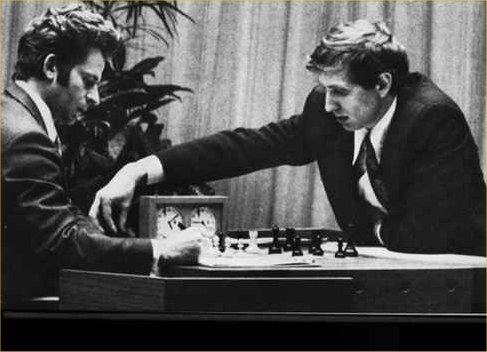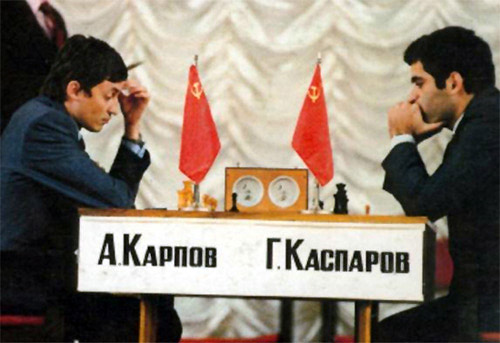Not exactly a watch but this may be of interest to some....
It's the late 80s and imagine a chess obsessed chap who enjoyed playing the noble game, beginning to realise an incipient fascination for watches, clocks and the concept of time. Luckily his game of choice features time as an important strategic component, there being controls to prevent players taking an age over each move and which can be used to pressurise one's opponent.
Watching rare games on TV and sometimes in person, the masters of the age, Karpov, Kasparov, Short and others - I noticed that one particular type of chess clock was preferred in FIDE world championship matches, national Olympiads and qualifiers.After some research (pre-internet days, so it took some time) I found the model was an East German (GDR Deutsche Demokratische Republik – remember them?) Garde branded clock containing Ruhla mechanisms.
Korchnoi -v- Karpov in 1978 in the Philippines.
Spassky -v- Fischer 1972 in Iceland.
Karpov -v- Kasparov in 1984.
One polite letter to the East German Embassy and a cheque for the massive sum of £14 later, my Garde chess clock arrived direct from the factory, the very model used by the greatest players on the planet and a patzer like me. I was somewhat amazed the East Germans took the trouble to reply and as a consequence of writing to them, I assume that I am, to this day, on some form of MI6 watch-list.
Anyway onto the clock.
A chess clock requires separate times for each player, and this is usually achieved by individual mechanisms – although I suppose in theory one complicated calibre could power distinct dials. Also required are; a method of starting and stopping the individual clocks to record the elapsed time and an indicator (the flag) showing when the agreed time limit has been reached. Useful but not essential is an indicator showing which player's clock is running.
On the rear of the case, you can see that the screws still show some red paint no doubt to determine whether the clock has been opened. For my example, the warranty has well and truly expired.
I hope you'll agree that the Garde clock is attractive, with a simple “Bauhaus” dial, contained within a minimalist yet elegant case, the plain sword hands and the overall symmetry. Each dial features a contrasting four pointed star indicator and flag. Traditionally clocks are set so that the time limit is reached when the hands show 6 o'clock; set at four o'clock you might be allowed 40 moves.
The clocks can be set in equilibrium with neither running. Before play commences, the flags are delicately balanced on the very tip of each minute hand so they will fall within a matter of seconds after the clock's are started. Etiquette dictates that white does not play until his flag had fallen.
Each button is surrounded by a heavy rubber washer, necessary to protect the activation lever and case, as the buttons are sometimes mercilessly whacked during play, especially when the time limit is approaching. The button presses down on a pivoted lever which uses the rather “agricultural” method of placing a curved metal bar against the balance to brake the movement. It's simple but effective, much like an AK47.
The movements continue the industrial feel and are two Rhula models marked 69-GDR. This may well indicate the year of design. Both clocks are running smoothly after 25 years of use and while not accurate to the second, are within 20 seconds of each other, which in a friendly game of chess is certainly accurate and fair enough.
The company made a variety of other clocks and watches throughout the years and are still making chess clocks. Nowadays these are digital, programmable and beep since the timing of games has evolved, along suggestions made by Bobby Fischer. It's interesting to note that the LCD replicates the star design as the indicator for the active clock.
While not down-playing the advantages of quartz, I do prefer the elegance and reliability of the mechanical version.
Cheers,
David









 Reply With Quote
Reply With Quote